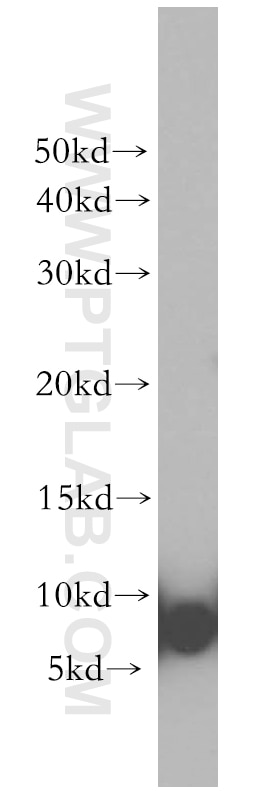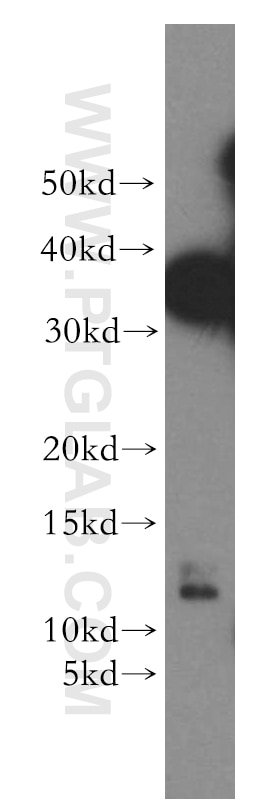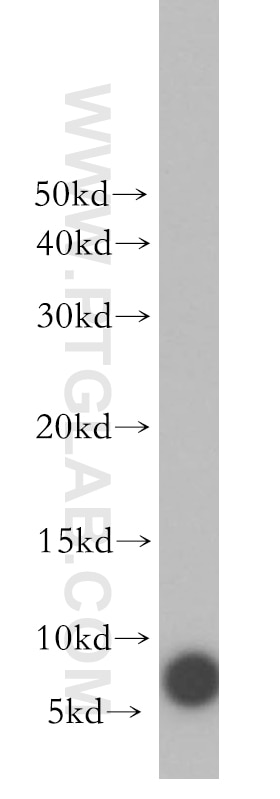S100A3 Polyklonaler Antikörper
S100A3 Polyklonal Antikörper für WB, ELISA
Wirt / Isotyp
Kaninchen / IgG
Getestete Reaktivität
human, Maus
Anwendung
WB, ELISA
Konjugation
Unkonjugiert
Kat-Nr. : 12343-1-AP
Synonyme
Geprüfte Anwendungen
| Erfolgreiche Detektion in WB | A2780-Zellen, HeLa-Zellen, Maushautgewebe |
Empfohlene Verdünnung
| Anwendung | Verdünnung |
|---|---|
| Western Blot (WB) | WB : 1:200-1:1000 |
| It is recommended that this reagent should be titrated in each testing system to obtain optimal results. | |
| Sample-dependent, check data in validation data gallery | |
Veröffentlichte Anwendungen
| WB | See 3 publications below |
Produktinformation
12343-1-AP bindet in WB, ELISA S100A3 und zeigt Reaktivität mit human, Maus
| Getestete Reaktivität | human, Maus |
| In Publikationen genannte Reaktivität | human, Maus |
| Wirt / Isotyp | Kaninchen / IgG |
| Klonalität | Polyklonal |
| Typ | Antikörper |
| Immunogen | S100A3 fusion protein Ag2995 |
| Vollständiger Name | S100 calcium binding protein A3 |
| Berechnetes Molekulargewicht | 12 kDa |
| Beobachtetes Molekulargewicht | 7 kDa, 12 kDa |
| GenBank-Zugangsnummer | BC012893 |
| Gene symbol | S100A3 |
| Gene ID (NCBI) | 6274 |
| Konjugation | Unkonjugiert |
| Form | Liquid |
| Reinigungsmethode | Antigen-Affinitätsreinigung |
| Lagerungspuffer | PBS with 0.02% sodium azide and 50% glycerol |
| Lagerungsbedingungen | Bei -20°C lagern. Nach dem Versand ein Jahr lang stabil Aliquotieren ist bei -20oC Lagerung nicht notwendig. 20ul Größen enthalten 0,1% BSA. |
Protokolle
| PRODUKTSPEZIFISCHE PROTOKOLLE | |
|---|---|
| WB protocol for S100A3 antibody 12343-1-AP | Protokoll herunterladen |
| STANDARD-PROTOKOLLE | |
|---|---|
| Klicken Sie hier, um unsere Standardprotokolle anzuzeigen |
Publikationen
| Species | Application | Title |
|---|---|---|
Front Cell Dev Biol Hypoxia-immune-related microenvironment prognostic signature for osteosarcoma | ||
PLoS One Multiple roles of integrin-linked kinase in epidermal development, maturation and pigmentation revealed by molecular profiling. | ||
DNA Cell Biol miR-1 Regulates Differentiation and Proliferation of Goat Hair Follicle Stem Cells by Targeting IGF1R and LEF1 Genes. |




